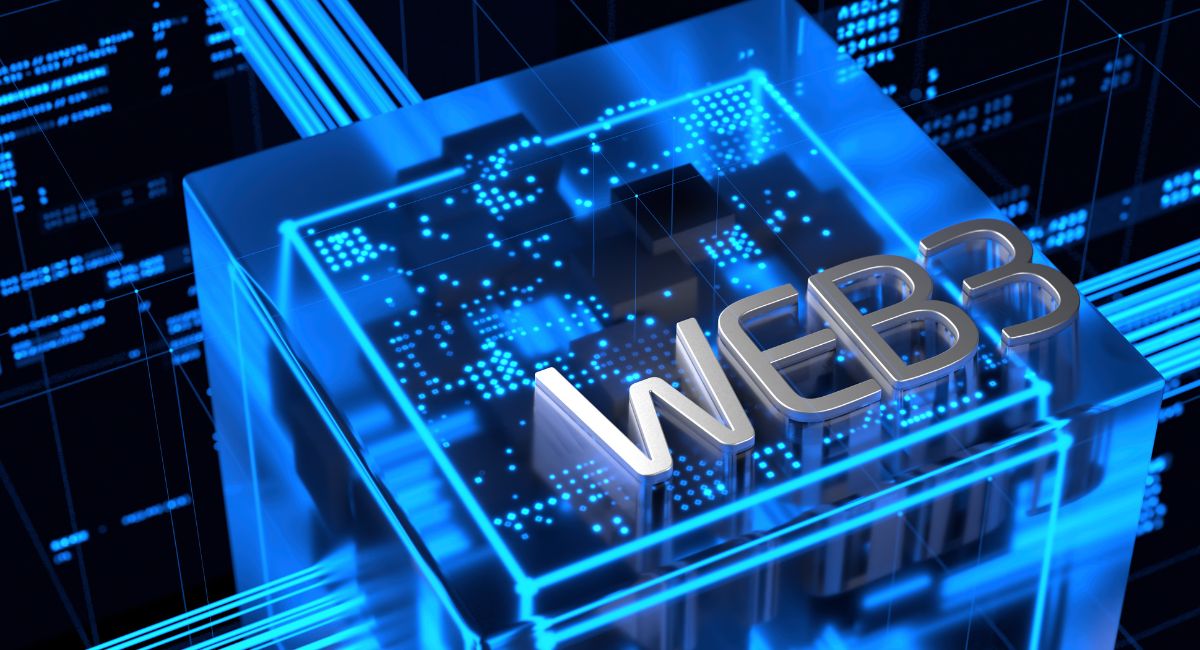Top 10 Web3 Trends That Pave The Future For AI
Web3 refers to the next evolution of the internet that aims to decentralize power and control from centralized entities, such as governments and corporations, and give it back to individual users. It is an emerging paradigm that builds upon the principles of Web2, which is the current state of the internet characterized by social media, online services, and centralized platforms. Web3 trends envisions a decentralized web that is powered by blockchain technology, cryptography, and peer-to-peer networks. It aims to address some of the shortcomings of Web2, such as data privacy concerns, censorship, and lack of user control over personal information. By leveraging decentralized technologies, Web3 aims to create a more open, secure, and user-centric internet.
At the core of Web3 is the concept of decentralization. Instead of relying on a central authority or intermediary to validate and control transactions and data, Web3 utilizes blockchain technology. Blockchain is a distributed ledger that records transactions across multiple computers, making it difficult for any single entity to control or manipulate the data. This decentralized nature of blockchain technology ensures transparency, immutability, and security.
One of the key components of Web3 is cryptocurrencies. Cryptocurrencies, such as Bitcoin and Ethereum, enable peer-to-peer transactions without the need for intermediaries like banks. They allow for secure and censorship-resistant payments and enable new economic models, such as decentralized finance (DeFi), where individuals can participate in lending, borrowing, and other financial activities without relying on traditional institutions.
Another important aspect of Web3 is smart contracts. Smart contracts are self-executing contracts with predefined rules and conditions encoded within them. They automatically execute transactions and agreements when the specified conditions are met. Smart contracts enable the development of decentralized applications (DApps) that operate on blockchain networks. These DApps can range from decentralized social media platforms and marketplaces to governance systems and prediction markets.
In addition to blockchain and cryptocurrencies, Web3 incorporates other technologies such as decentralized storage, decentralized identity systems, and decentralized governance mechanisms. Decentralized storage systems, like IPFS (InterPlanetary File System), allow for distributed and resilient storage of data, reducing reliance on centralized servers. Decentralized identity systems aim to give users control over their personal data and enable seamless and secure identity verification without relying on third parties. Decentralized governance mechanisms, such as DAOs (Decentralized Autonomous Organizations), enable community-driven decision-making and allow participants to have a say in the development and direction of decentralized platforms.
Web3 also emphasizes the importance of user privacy and data ownership. It aims to give users more control over their personal information and enable them to choose how and when their data is shared. Through techniques like zero-knowledge proofs and differential privacy, Web3 seeks to provide privacy-enhancing solutions while still maintaining the necessary transparency and trust within the system.
Overall, Web3 represents a shift towards a more user-centric, decentralized, and open internet. It aims to empower individuals, promote trust and transparency, and enable new forms of economic and social interactions. While it is still in its early stages, Web3 has the potential to reshape the internet and revolutionize various industries, including finance, governance, social media, and more.
How Web3 is related to AI?
Web3 and AI are two emerging technologies that can complement and enhance each other’s capabilities. While Web3 focuses on creating a decentralized and user-centric internet, AI, specifically machine learning, enables computers to learn from data and perform tasks that typically require human intelligence. The combination of Web3 and AI can unlock new possibilities and reshape various aspects of technology, business, and society.
Here are some ways in which Web3 and AI intersect and interact:
1. Decentralized AI: Web3’s decentralized infrastructure can provide a suitable environment for deploying and running AI algorithms. Instead of relying on centralized servers or cloud platforms, AI models and data can be distributed across a network of nodes, ensuring privacy, security, and scalability. Decentralized AI can enable collaborative and privacy-preserving machine learning, where multiple participants can contribute their data and models without sharing sensitive information.
2. Data Marketplace: Web3’s decentralized nature can facilitate the creation of data marketplaces where individuals have control over their data and can choose to share it with AI algorithms or models. These marketplaces can incentivize data sharing by providing individuals with ownership, control, and the ability to monetize their data. AI algorithms can leverage these data marketplaces to access diverse and high-quality datasets for training and improving their performance.
3. Trust and Transparency: Web3’s emphasis on transparency and verifiability aligns with the need for trust in AI systems. AI algorithms often operate as black boxes, making it difficult to understand their decision-making processes. With Web3’s principles, it becomes possible to build AI systems that are more transparent, auditable, and accountable. For example, blockchain technology can be used to record AI model training processes, ensuring the integrity and reproducibility of the results.
4. Personalized AI Services: Web3’s focus on user control and data ownership can enable personalized AI services that respect user preferences and privacy. Instead of relying on centralized platforms that collect massive amounts of user data, Web3 can facilitate the development of AI models that operate directly on users’ devices or utilize encrypted data. This decentralized approach allows individuals to benefit from AI-driven services while maintaining control over their personal information.
5. AI for Decentralized Governance: Web3’s decentralized governance mechanisms, such as DAOs, can leverage AI technologies to enhance decision-making processes. AI algorithms can assist in analyzing data, providing insights, and facilitating consensus among community members. AI-powered governance systems can help automate certain tasks, improve efficiency, and enable more inclusive and informed decision-making within decentralized organizations.
6. AI in Security and Fraud Detection: Web3’s decentralized infrastructure can benefit from AI algorithms to enhance security and fraud detection mechanisms. AI techniques can be applied to analyze network behavior, identify anomalies, and detect potential security threats in a decentralized network. By leveraging AI’s pattern recognition and anomaly detection capabilities, Web3 can create more robust and secure systems.
It is important to note that the full potential of the intersection between Web3 and AI is still being explored, and challenges such as scalability, privacy, and interoperability need to be addressed. However, the combination of these two technologies holds great promise for creating a more decentralized, intelligent, and user-centric digital ecosystem.
Also read: NFTs And Web3: Understanding The Intersection Of Blockchain And Digital Art
Importance of Web3 for the economy
Web3 has the potential to bring significant changes to the economy by introducing new economic models, promoting financial inclusion, fostering innovation, and redefining the relationship between individuals and businesses. Here are several key reasons why Web3 is important for the economy:
1. Decentralized Finance (DeFi): Web3 enables the development of decentralized finance applications that operate on blockchain networks. DeFi platforms provide a wide range of financial services, including lending, borrowing, trading, and asset management, without the need for intermediaries like banks. By leveraging smart contracts and cryptocurrencies, DeFi promotes financial inclusion, reduces barriers to entry, and offers financial services to individuals who are underserved by traditional banking systems.
2. Democratized Access to Capital: Web3 enables crowdfunding and tokenization of assets, allowing businesses and individuals to raise capital from a global pool of investors without relying on traditional financial intermediaries. This decentralized fundraising approach, often referred to as Initial Coin Offerings (ICOs) or token sales, can democratize access to capital, giving smaller businesses and startups the opportunity to raise funds and innovate. It also provides individuals with investment opportunities that were previously limited to accredited investors.
3. Ownership and Monetization of Digital Assets: Web3 introduces the concept of non-fungible tokens (NFTs), which are unique digital assets that can represent ownership or proof of authenticity for various digital and physical items. NFTs enable creators and artists to tokenize and monetize their digital creations, such as artwork, music, videos, and virtual assets in games. This allows creators to retain ownership, establish provenance, and earn revenue from the sale and licensing of their digital assets, creating new income streams and economic opportunities.
4. Enhanced Security and Trust: Web3’s decentralized infrastructure, powered by blockchain technology, provides enhanced security and trust for economic transactions. By utilizing cryptographic techniques and distributed consensus mechanisms, Web3 mitigates the risks of fraud, tampering, and data breaches. This increased security and trust can lead to improved efficiency, reduced costs, and greater confidence in economic interactions, benefiting businesses, consumers, and the overall economy.
5. New Business Models and Decentralized Governance: Web3 facilitates the development of decentralized autonomous organizations (DAOs), which are community-driven organizations governed by smart contracts and governed by their participants. DAOs enable collaborative decision-making, resource allocation, and the development of new business models. They can create innovative ecosystems where stakeholders have a say in the organization’s direction, fostering transparency, accountability, and innovation.
6. Global Access and Interoperability: Web3 operates on a global scale, accessible to anyone with an internet connection. It eliminates geographical barriers and allows for seamless cross-border transactions, opening up new markets and economic opportunities. Additionally, Web3 promotes interoperability between different blockchain networks and platforms, enabling the transfer of value and data between disparate systems. This interoperability can foster collaboration, innovation, and efficiency across various economic sectors.
7. Data Ownership and Privacy: Web3 emphasizes user control over personal data and privacy. With Web3, individuals can choose how and when their data is shared, reducing the power imbalance between individuals and centralized platforms. This shift in data ownership can have economic implications, as individuals can monetize their own data, participate in data marketplaces, and negotiate fair value exchanges with businesses. Moreover, Web3’s focus on privacy-enhancing technologies can enhance consumer trust and foster responsible data practices, leading to more sustainable and ethical business models.
Overall, Web3’s impact on the economy is multifaceted, ranging from financial services and ownership models to governance structures and data privacy. By fostering decentralization, trust, and innovation, Web3 has the potential to reshape economic systems, empower individuals, and create a more inclusive and equitable economy.
Also read: Top 10 Web3 Development Companies In 2023 You Need To Know
Top 10 Web3 Trends that pave the Future for AI
Web3 is the next generation of the internet, built on decentralized technologies like blockchain. It promises to give users more control over their data and privacy, and to create more open and transparent online communities.
AI is already playing a major role in Web3, and its potential is only just beginning to be realized. Here are 10 Web3 trends that are paving the way for the future of AI:
- Decentralized AI. Decentralized AI is a new approach to AI that uses blockchain and other decentralized technologies to create AI systems that are owned and controlled by the community. This has the potential to address some of the major challenges facing centralized AI, such as bias, privacy, and security.
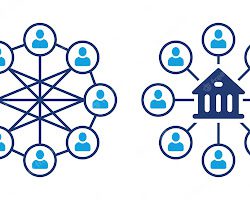
- Federated learning. Federated learning is a new approach to machine learning that allows AI models to be trained on data that remains on users’ devices. This has the potential to address the privacy concerns that have been raised about centralized AI.

- AI-powered NFTs. NFTs are a type of digital asset that is stored on a blockchain. They can be used to represent ownership of anything from digital artworks to real estate. AI is being used to create new ways to use NFTs, such as for verifying the authenticity of products or for creating more personalized experiences.
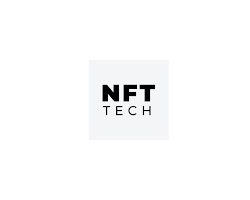
- AI-powered DeFi. DeFi is a financial system that is built on decentralized technologies. AI is being used to create new DeFi applications, such as for lending and borrowing money, or for trading assets.
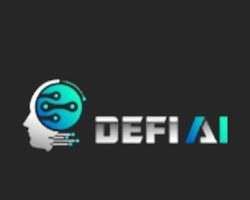
- AI-powered social media. Social media is being transformed by AI. AI is being used to create more personalized experiences, to detect and remove harmful content, and to moderate conversations.

- AI-powered gaming. AI is playing a major role in the gaming industry. AI is being used to create more realistic and immersive games, to personalize gaming experiences, and to detect and prevent cheating.
- AI-powered healthcare. AI is being used to revolutionize healthcare. AI is being used to diagnose diseases, to develop new treatments, and to provide personalized care.
- AI-powered transportation. AI is being used to transform transportation. AI is being used to develop self-driving cars, to optimize traffic flow, and to improve public transportation.
- AI-powered supply chain. AI is being used to transform supply chains. AI is being used to optimize inventory management, to track shipments, and to prevent fraud.
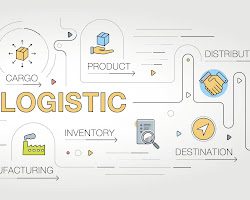
- AI-powered cybersecurity. AI is being used to improve cybersecurity. AI is being used to detect and prevent cyberattacks, to monitor networks for threats, and to respond to incidents.
These are just a few of the Web3 trends that are paving the way for the future of AI. As Web3 continues to evolve, we can expect to see even more innovative and exciting ways to use AI to improve our lives.
Benefits of using Web3 for AI
Using Web3 in conjunction with AI can bring several benefits and unlock new possibilities in the field of artificial intelligence. Here are some key benefits of leveraging Web3 for AI:
1. Decentralization and Data Privacy: Web3’s decentralized infrastructure addresses concerns related to centralized control and data privacy. With Web3, AI models and algorithms can operate in a distributed manner, running on nodes across a network, without relying on a central authority or server. This decentralized approach ensures that sensitive data remains under the control of individuals, reducing the risk of data breaches and unauthorized access. Web3’s focus on privacy-enhancing technologies, such as zero-knowledge proofs and differential privacy, can further enhance data privacy and protect sensitive information while still enabling AI computations.
2. Access to Diverse and High-Quality Data: Web3 can facilitate the creation of decentralized data marketplaces where individuals have control over their data and can choose to share it with AI algorithms. This decentralized data ecosystem allows for the collection of diverse and high-quality datasets from various sources. AI models trained on such datasets can benefit from increased robustness, accuracy, and generalization capabilities. Additionally, Web3’s ability to tokenize and incentivize data sharing can encourage individuals to contribute their data, leading to larger and more comprehensive datasets for training AI models.
3. Collaborative and Federated Learning: Web3’s decentralized nature enables collaborative and federated learning approaches. Collaborative learning involves multiple participants training a shared AI model using their local data, while federated learning allows AI models to be trained directly on users’ devices without requiring data to be centralized. By leveraging Web3, AI algorithms can securely aggregate and learn from distributed data without the need for data to be shared or moved. This approach preserves data privacy, reduces the need for data transfers, and promotes collaborative and privacy-preserving machine learning.
4. Trust and Transparency: Web3’s emphasis on transparency and verifiability aligns with the need for trust in AI systems. AI algorithms often operate as black boxes, making it difficult to understand their decision-making processes. By utilizing Web3’s principles, such as blockchain technology, AI systems can be made more transparent and auditable. The use of blockchain for recording AI model training processes and decision outcomes provides a verifiable and tamper-proof record, enabling stakeholders to validate the integrity and fairness of AI systems. This transparency and accountability can enhance trust in AI applications and promote responsible AI deployment.
5. Incentivization and Token Economics: Web3 introduces the concept of cryptocurrencies and tokens, which can be utilized to create token economies and incentivize AI participation and contributions. By integrating token economics into AI systems, participants can be rewarded for providing computational resources, contributing data, or developing AI models. Token economies can stimulate collaboration, innovation, and knowledge sharing within the AI community, leading to the creation of valuable AI assets and solutions.
6. Enhanced Security and Fraud Detection: Web3’s decentralized infrastructure can enhance security and fraud detection in AI systems. By leveraging blockchain technology, AI algorithms can be executed in a tamper-resistant environment, ensuring the integrity of model parameters and preventing unauthorized modifications. Additionally, the distributed nature of Web3 can improve the robustness of AI systems against single points of failure and malicious attacks. This enhanced security can be particularly beneficial for critical AI applications, such as those used in financial transactions, healthcare, and cybersecurity.
7. Interoperability and Collaboration: Web3 promotes interoperability between different blockchain networks and platforms. This interoperability allows for seamless integration and collaboration between AI applications and services built on different blockchain networks. AI models and algorithms can leverage cross-chain interoperability to access diverse resources, data, or computational capabilities across various Web3 platforms. This interoperability fosters collaboration, innovation, and the exchange of AI technologies and insights.
By combining Web3’s decentralized infrastructure, data privacy, trust, and token economies with AI technologies, we can unlock new possibilities for secure, privacy-preserving, and collaborative AI applications. The integration of Web3 and AI can lead to more transparent, accountable, and user-centric AI systems, while also enabling new economic models and incentives for AI participation and contributions.
Also read: Top 5 Expert Advice On How To Become A Web3 Specialist
Future of Web3 in AI
The future of Web3 in AI holds tremendous potential for transforming the field of artificial intelligence. As Web3 continues to evolve and gain adoption, its integration with AI can lead to several exciting developments. Here are some key aspects that characterize the future of Web3 in AI:
1. Enhanced Privacy and Data Ownership: Web3’s focus on data privacy and ownership aligns with the growing concerns regarding the handling and control of personal data in AI systems. In the future, Web3 can enable individuals to have greater control over their data, allowing them to determine how and when their data is used for AI training and inference. This shift empowers users to monetize their data, participate in data marketplaces, and ensure their privacy is respected, all while contributing to the advancement of AI models.
2. Decentralized AI Governance: Web3’s decentralized governance mechanisms, such as DAOs, can play a vital role in the future of AI. DAOs allow for community-driven decision-making, enabling stakeholders to collectively govern AI models, algorithms, and data usage. This decentralized AI governance can foster transparency, fairness, and inclusivity in shaping the development, deployment, and impact of AI technologies. Through DAOs, stakeholders can actively participate in defining AI policies, ensuring accountability, and aligning AI advancements with societal values.
3. Trustworthy and Explainable AI: Web3’s emphasis on transparency and verifiability can address the issue of trust in AI systems. In the future, Web3 can contribute to the development of more trustworthy and explainable AI models. By leveraging blockchain technology and distributed ledgers, AI systems can record and validate their training data, model parameters, and decision-making processes. This transparency enables users, regulators, and auditors to examine and verify the behavior and outcomes of AI algorithms, improving accountability and fostering trust.
4. Federated and Collaborative Learning: Web3’s decentralized nature can promote federated and collaborative learning approaches. In the future, AI models can be trained using distributed data sources without the need to centrally aggregate sensitive information. This enables individuals and organizations to contribute their data while maintaining privacy and data ownership. Federated learning and collaborative AI can lead to more robust and accurate models by leveraging diverse datasets, providing personalized insights, and addressing data bias issues.
5. Tokenized AI Economy: Web3’s token economies and cryptocurrencies can reshape the economic landscape of AI. In the future, we may see the emergence of tokenized AI networks, where individuals can earn tokens by providing computational resources, contributing data, developing AI models, or offering AI-related services. These token economies incentivize participation, foster collaboration, and create value exchange mechanisms within the AI ecosystem. Such economies can unlock new business models, fuel innovation, and reward the contributions of AI stakeholders.
6. Interoperability and AI Marketplaces: Web3’s interoperability capabilities can facilitate the emergence of AI marketplaces that operate across different blockchain networks. These marketplaces can connect AI developers, users, and data providers, creating a vibrant ecosystem for trading AI models, algorithms, and insights. Interoperability enables seamless integration of AI services from different platforms, encourages collaboration between developers, and allows for the exchange of AI-related tokens, resources, and data.
7. AI-powered Decentralized Applications: Web3 can enable the development of AI-powered decentralized applications (DApps) that operate on blockchain networks. These DApps can utilize AI algorithms for various purposes, including data analysis, predictive modeling, personalized recommendations, and automation. By combining the benefits of Web3’s decentralized infrastructure with the capabilities of AI, DApps can provide innovative solutions across industries, such as finance, healthcare, supply chain management, and more.
It’s important to note that while the future of Web3 in AI presents immense opportunities, it also poses challenges. Scalability, interoperability, data quality, governance frameworks, and regulatory considerations will need to be addressed for the seamless integration of Web3 and AI. However, as these challenges are overcome, the collaboration between Web3 and AI will continue to revolutionize how we develop, deploy, and benefit from artificial intelligence in a decentralized, privacy-preserving, and user-centric manner.
Stay informed with daily updates from Blockchain Magazine on Google News. Click here to follow us and mark as favorite: [Blockchain Magazine on Google News].
Get Blockchain Insights In Inbox
Stay ahead of the curve with expert analysis and market updates.
latest from tech
Disclaimer: Any post shared by a third-party agency are sponsored and Blockchain Magazine has no views on any such posts. The views and opinions expressed in this post are those of the clients and do not necessarily reflect the official policy or position of Blockchain Magazine. The information provided in this post is for informational purposes only and should not be considered as financial, investment, or professional advice. Blockchain Magazine does not endorse or promote any specific products, services, or companies mentioned in this posts. Readers are encouraged to conduct their own research and consult with a qualified professional before making any financial decisions. The featured image used is just a creative depiction of the title and it does not intend to hurt sentiments of any person or institution. If it hurts anyone sentiments, please do not hesitate to reach out to Blockchain Magazine.

 Bitcoin
Bitcoin  Ethereum
Ethereum  XRP
XRP  Tether
Tether  Solana
Solana  USDC
USDC  Dogecoin
Dogecoin  Cardano
Cardano  Lido Staked Ether
Lido Staked Ether  TRON
TRON  Wrapped Bitcoin
Wrapped Bitcoin  Chainlink
Chainlink  Wrapped stETH
Wrapped stETH  Sui
Sui  Avalanche
Avalanche  Stellar
Stellar  Hedera
Hedera  Toncoin
Toncoin  Shiba Inu
Shiba Inu  Hyperliquid
Hyperliquid  LEO Token
LEO Token  Litecoin
Litecoin  Bitget Token
Bitget Token  WETH
WETH  USDS
USDS  Polkadot
Polkadot  Bitcoin Cash
Bitcoin Cash  Ethena USDe
Ethena USDe  Wrapped eETH
Wrapped eETH  Uniswap
Uniswap  MANTRA
MANTRA  Ondo
Ondo  Pepe
Pepe  Monero
Monero  Aave
Aave  Official Trump
Official Trump  NEAR Protocol
NEAR Protocol  WhiteBIT Coin
WhiteBIT Coin  Mantle
Mantle  Aptos
Aptos  Dai
Dai  Internet Computer
Internet Computer  Ethereum Classic
Ethereum Classic  Bittensor
Bittensor  Cronos
Cronos  OKB
OKB  POL (ex-MATIC)
POL (ex-MATIC)  Gate
Gate 